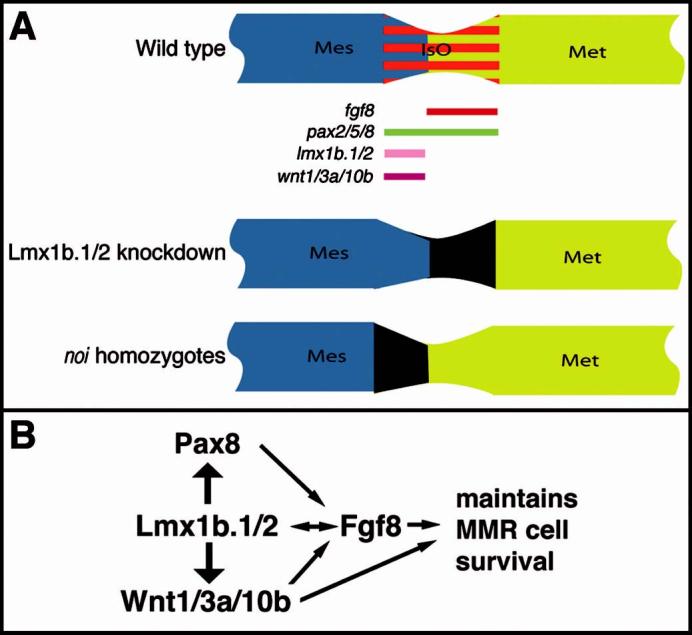Fig. 10.

Lmx1b.1 and Lmx1b.2 cooperate with other IsO genes to maintain cell survival in the caudal MMR. (A) During IsO maintenance in wild type embryos, Lmx1b.1 and Lmx1b.2 maintain wnt1, wnt3a, and wnt10b expression at the caudal edge of the mesencephalic vesicle. Fgf8 is expressed in an adjacent domain in the rostral metencephalic vesicle. Pax2.1,pax5, and pax8 are expressed in a broader domain that encompasses the caudal mesencephalon and rostral metencephalon. When Lmx1b.1/2 activity is knocked down with morpholinos, increased apoptosis is observed, not in the Lmx1b.1/2 expression domain, but in the adjacent portion of the MMR, including the normal fgf8 domain. In contrast, loss of Pax2.1 function in noi mutant embryos results in increased apoptosis concentrated in the rostral portion of the MMR. These data indicate that the IsO produces signals that maintain cell survival in an asymmetric, non-cell-autonomous manner. (B) The data presented are consistent with a model in which Lmx1b.1 and Lmx1b.2 maintain cell survival at the MMR by regulating fgf8,wnt1, wnt10b, and wnt3a, secreted factors whose loss precipitates apoptosis in the MMR (Buckles et al., 2004; Jászai et al., 2003). Lmx1b.1/2 may maintain fgf8 by regulating expression of wnt1, wnt3a, wnt10b,pax8, or an alternative mechanism. Fgf8, in turn, functions in a positive feedback loop to maintain Lmx1b.1/2 expression.
